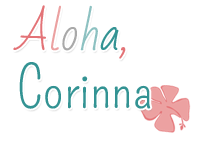Aloha friends! I hope this post finds you happy, healthy and progressing well in your new school year. I wanted to share how I have changed up my math time this year to really address all of my students needs.
Like many of you I have a classroom full of kids at all levels. I have some who are receiving SPED services and a few that are on my radar for future services. I also have my high level students who are done with everything in a few minutes and are ready for more. Then I have my right on target kids who don't seem to ever get as much attention in a whole group setting.
Whole group instruction for math is almost laughable in my classroom. I am exhausted when I try to teach whole group. I seem to repeat the same things over and over. Know what I'm talking about?
I start my math time off with a mini lesson on what the standard/objective is for the day and I give the students an example of what we will be doing. (5 minutes)
6
Like many of you I have a classroom full of kids at all levels. I have some who are receiving SPED services and a few that are on my radar for future services. I also have my high level students who are done with everything in a few minutes and are ready for more. Then I have my right on target kids who don't seem to ever get as much attention in a whole group setting.
Whole group instruction for math is almost laughable in my classroom. I am exhausted when I try to teach whole group. I seem to repeat the same things over and over. Know what I'm talking about?
Math rotations have helped to make my instruction much more meaningful and my students love it.
Then I focus them on the Math Rotation board.
I always start out with my lowest group to make sure we have enough time to go over the concept and that they can have guided practice with me. If they don't finish in our time (15-20 minutes) they can finish at their seats during their Practice Book time. Sometimes I keep them with me and they repeat the lesson with the next group.
I have my math wizards start off with their practice books. We use Go Math and the practice books have pages from the lesson that can be sent home for homework our used in class.
When they are finished with the practice book page they turn it in and work on a math enrichment project or fun math pages that they have in their desk.
Students at centers have a choice of 6 different buckets. Each one is filled with lots of activities at varying levels.
Each tub also has a particular skill such as measurement, basic facts, place value, etc...
I have them work alone at each center. They have a simple menu that keeps them from repeating a center until they have gone to each one. Click {HERE} to download.
After center activities they head to computers. Last year I received a grant from Reflex Math and it was wonderful!! My kids loved it and they mastered their facts so quickly! One of the third grade teachers even told me how happy she was that so many students came in knowing their facts by heart.
My principal gave our 2nd grade team the funds to continue it this year.
Our district also has a subscription to IXL. Once students earn a green light on Reflex they can go to IXL. Most of my students never leave the Reflex site.
This system is the only way I can meet with each and every student to see how they are doing and what they need work on. Plus the students are on task and actively engaged the whole hour and 20 minutes!
Many people say they get bored teaching the same lesson 4 times. When I teach whole group I seem to go over it a lot more than that. By the time my wizards get to me I really don't have to do much more than a simple review since they have already done their practice book.
Everyone gets what they need and more. I have enrichment for my wizards and remedial work for sweet and lows.
Do you have rotations or centers in your classroom? How is your system the same or different? I am always looking for creative and new ideas!










































